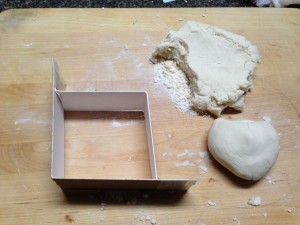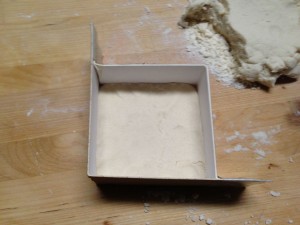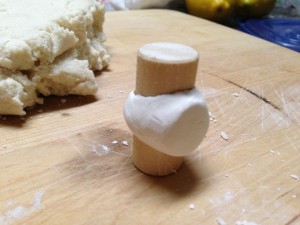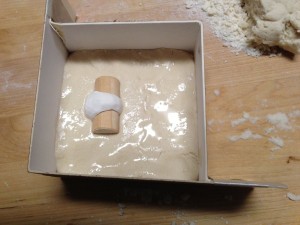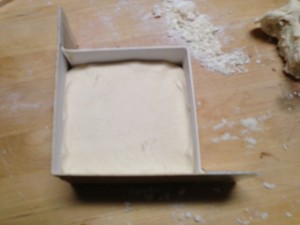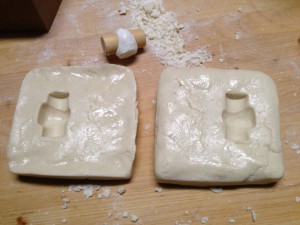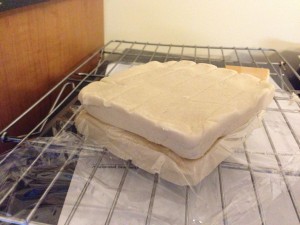I’ve been wanting a signet ring for a long time. I was daunted by the idea of engraving (since all the extant signets I can find were engraved), so I’ve been putting it off. At 1:00 this morning, my brain decided that it was time to start this project, and so I did, if only so I could tell my brain to shut up and go back to sleep.
Part of the impetus for finally starting this project was Margherita Battistina‘s idea of making molds out of salt dough. Cheap, easy, reusable; what’s not to like? I figured it was worth a shot. After all, all I needed was a vaguely ring-shaped object that I could grind down to the shape I wanted.
I made my dough with 2c flour, 1c table salt, 1 c water, and about 1T lime juice. I mixed it and kneaded it until it was nice and smooth. I built a frame out of a couple strips of mat board and some tape.
I squished a chunk of dough into the frame and smoothed it down. So far, so good.
The ring master was made of Sculpey wrapped around a piece of the only suitably sized dowel I could lay my hands on in the wee hours of the morning. Fortunately, it was exactly the size of my pinky. I baked the Sculpey and it was good to go.
Here is where we begin to see the perils of impatience. Ideally, I would make the impression of my master in the bottom half of the mold, let it dry completely, perhaps sand it flat, and then make the second half of the mold to match. Instead, I coated the first half of the mold with oil, popped the master in, and…
Smashed another chunk of dough right on top. I tamped it down as best I could (with a peanut butter jar) to try to get a good impression of my master. Did it work?
Looks like it did! Now, both halves of the mold were pretty flexible at this point, and I didn’t want them to get misaligned, so…
I put the two halves back together (with the master tucked inside), separated by a piece of plastic wrap. I set this sandwich on a wire rack so the bottom could dry as well.
Now, what I probably should have done at this point was let the mold air dry by leaving it alone for a very long time. I did not do this. I went back to sleep, got up and went to work, came home and popped both halves into a 300 degree oven. The outside faces of the two halves were pretty dry at this point, so I wasn’t as worried about them getting misaligned. Unfortunately, this dough is basically very unappetizing bread. Despite being unleavened, the mold halves started rising slightly, which I knew would make a mess of my casting. The dough was dry on the outside now (more or less), but still squishable in the middle. I decided I would go ahead and give it a shot before things went any further afield.
How did it turn out? Tune in next time…

